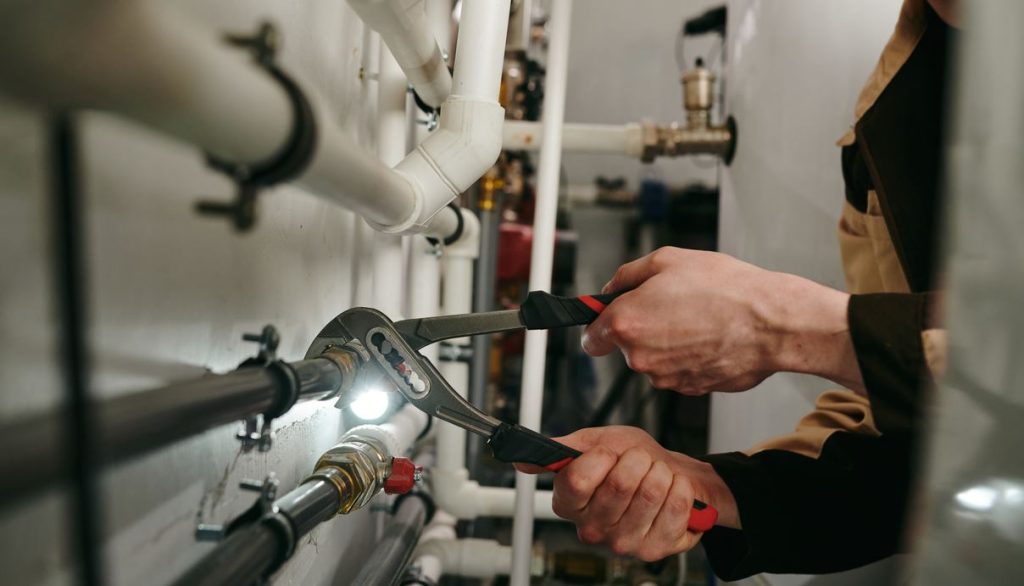As climate change continues to shape our world’s future, sustainability has become a critical focus for homeowners. One area of the home that often gets overlooked, yet has immense potential for eco-improvements, is the plumbing system.
It’s possible to save substantial amounts of water, reduce energy use, and even lower utility bills by making thoughtful upgrades. In this blog post, we’ll explore various eco-friendly plumbing upgrades, empowering you to enhance your home’s sustainability.
Low-Flow Fixtures
Let’s start with low-flow fixtures, the simplest and most cost-effective eco-friendly plumbing upgrade. These devices, which include faucets, showerheads, and toilets, use significantly less water than their traditional counterparts.

For instance, a conventional showerhead uses about 2.5 gallons of water per minute (gpm), whereas a low-flow showerhead can use as little as 1.5 gpm, representing a 40% reduction in water consumption. Similarly, water-saving faucets reduce flow rates from 2.2 gpm to 1.5 gpm, saving about 32% of water.
But the benefits extend beyond water savings. Reduced water use means less energy is needed to heat water, which lowers your carbon footprint and utility bills. So, these fixtures help conserve our planet’s precious resources and offer a quick return on investment through energy and cost savings.
Energy-Efficient Appliances
Another way to enhance your home’s sustainability is by investing in energy-efficient appliances, such as tankless water heaters and high-efficiency toilets.
Tankless water heaters, otherwise known as demand-type or instantaneous water heaters, supply hot water solely on demand, thereby averting the energy wastage linked with conventional storage water heaters. By warming water directly and circumventing the use of a storage tank, these appliances can enhance energy efficiency by 24%–34% in homes consuming 41 gallons or less of hot water per day.
On the other hand, high-efficiency toilets use less water per flush than conventional toilets. While traditional models use about 3.5 to 5 gallons per flush, a high-efficiency toilet uses just 1.28 gallons, representing more than a 60% reduction in water consumption. The savings in water and, consequently, in your water bill make these toilets a smart, eco-friendly choice.
Graywater Systems
Installing a greywater system is a superb method to bolster the ecological consciousness of your home. This system takes lightly used water from your bathroom sinks, showers, and washing machines and diverts it into non-potable applications like irrigation.
By reusing graywater, you significantly reduce your home’s freshwater needs. Besides conserving a substantial amount of water, you’ll also decrease wastewater entering sewage treatment facilities, relieving the strain on these systems and reducing energy consumption.
While implementing a greywater system requires an initial investment, reducing water usage can lead to considerable cost savings over time. Additionally, greywater systems can provide an excellent solution for water conservation in regions where water resources are scarce.
To hire experts for the job, visit www.proplumbergoldcoast.com/.
Rainwater Harvesting
Lastly, another innovative solution to reducing freshwater consumption is rainwater harvesting, where rainwater is collected, stored, and used for non-potable applications like gardening, washing cars, and flushing toilets. This practice can significantly reduce your reliance on municipal water, lowering water bills.

Moreover, rainwater harvesting helps to mitigate the impacts of stormwater runoff, a significant cause of water pollution. By catching and storing rainwater, you’re preventing it from washing over paved surfaces and collecting pollutants that eventually end up in our waterways.
While implementing a rainwater harvesting system may vary depending on your home’s size and layout, even a simple setup involving a catchment area (like your roof), a storage tank (like a rain barrel), and a delivery system can result in considerable water savings.
Wrapping up, there’s an abundance of strategies to boost the eco-friendliness of your home via sustainable plumbing modifications. Low-flow fixtures and energy-efficient appliances can significantly reduce water and energy consumption, while graywater systems and rainwater harvesting can turn waste and rainwater into valuable resources.
These eco-friendly upgrades align with environmental values and offer tangible financial benefits through reduced utility bills. By initiating these alterations, each of us can play a part in fostering a greener future, starting with our individual homes.
